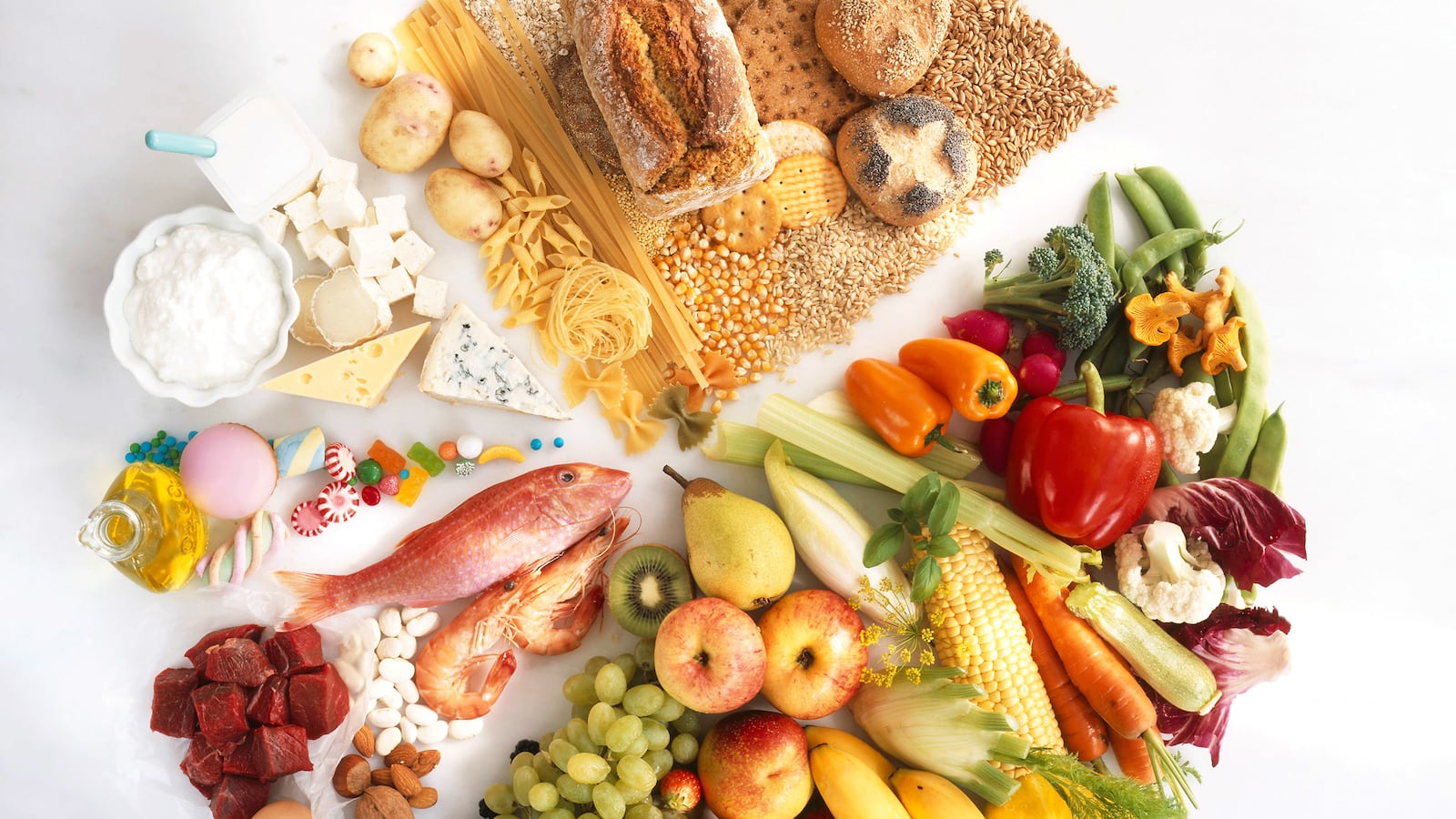By Alex Orlov for Life by DailyBurn
An estimated 18 million Americans have non-celiac gluten sensitivity. But what if they’re wrong? A new and growing body of evidence suggests that the protein in gluten isn’t the only gastrointestinal villain that might be giving people a hard time. In fact, what many people assume is a gluten intolerance might actually be a reaction to an entirely different molecule, instead.
Let us introduce you to FODMAPs, which stands for Fermentable Oligosaccharides, Disaccharides, Monosaccharides and Polyols. (See why it needs an acronym?) Each of these words are fancy scientific phrases for different types of food starches and sugars. In a nutshell, FODMAPs includes short-chain carbohydrates that some people have trouble digesting. Tons of foods you eat every day, like beans, ice cream, apples and asparagus, are high in FODMAPs and could be causing your gas and bloating. Here’s how to figure out if FODMAPs might be behind your digestive distress.
The Low-FODMAP Diet: What You Need to Know
For people with a sensitivity to FODMAPs, the gastrointestinal tract in their small intestines can’t absorb short-chain carbohydrates. This causes these unabsorbed molecules to move into the large intestine, where they start to cause problems. “The bacteria go to town on these sugars, and the result is fermentation,” says Nicole Silber, R.D., Director of Pediatric Nutrition at Middleberg Nutrition in New York City. This agitation leads to gas and bellyaches. Plus, bloating and cramping can occur because these molecules attract water to the gut, says Silber.
Related: How to Buy Gluten-Free Without Getting Duped
“Often it is a volume issue, most people can tolerate some degree of FODMAPs,” says Silber. Still, you might be surprised to learn that a lot of healthy items might be wreaking havoc on your stomach. Fruits like apples, avocados, peaches, pears and watermelon contain higher amounts of polyols and fructose, which are FODMAPs. And nutritious cauliflower, broccoli, brussels sprouts, eggplant and garlic have fructan, another digestive offender.
Take a look at the graphic below to find out what common foods are low in FODMAPs.

The Link Between FODMAPs, Gluten Sensitivity and IBS
The term FODMAPs is nothing new in the gastrointestinal community. In the late 1990s, doctors began to suspect that FODMAPs were to blame for the digestive issues of patients with irritable bowel syndrome (IBS). Transitioning to a low-FODMAPs diet was shown to improve many symptoms of IBS, and recent research reveals that the diet can help people without IBS, too. A 2013 study published in the journal Gastroenterology revealed that individuals with non-celiac gluten sensitivity could benefit greatly from omitting FODMAPS-rich foods from their diets.
“This was a very impressive study,” says Gina Sam, MD, MPH Director of the Mount Sinai Gastrointestinal Motility Center at the Mount Sinai Hospital. Though there were only 37 participants, the results were remarkable enough for the medical community to take notice. “Patients on the low-FODMAPs diet had dramatic improvements in pain, bloating and stool consistency,” she says. Dr. Sam began using low-FODMAP diets to help IBS patients in early 2014.
“When it comes to celiac disease and gluten sensitivity, it is the gluten, which is the protein [in foods] that is triggering symptoms,” says Silber. Meanwhile, for FODMAP-rich foods, it is the carbohydrates and fiber in people’s diets that cause gastrointestinal distress, says Silber.
Related: The Breakfast That Could Help You Eat 50 Percent Less at Lunch
Herein lies the problem in distinguishing FODMAPs sensitivity from gluten problems: Wheat-based gluten products like conventional pastas and breads contain fructan, a type of carbohydrate that is a FODMAP. “It is very likely that it is the actual fructan, or [the] carbohydrate, in wheat triggering these symptoms [in some non-celiac gluten sensitive people] and not the protein, gluten,” says Silber. While gluten typically gets a bad rep, says Silber, the fructan may at fault all along. This is what makes it hard to figure out if you’re sensitive to gluten, FODMAPs, or even both.
But keep in mind that FODMAPs aren’t necessarily the enemy, either. The fermentation that causes digestive distress for some might be beneficial for others. “[They] may play a role in reducing risk of certain cancers, inflammation, gastrointestinal disease and even weight gain,” says Silber.
Should You Try the Low-FODMAPs Diet?
Clearly, it can be difficult to pinpoint whether a person’s food sensitivities are gluten or FODMAPs-based. If you’re considering doing a serious diet overhaul, you’d be better off having an expert weigh in first, say Dr. Sam and Silber. Luckily, there are a few strategies that can help those with mild or occasional digestive distress nail down their food triggers.
“Often just eliminating some gas-promoting vegetables, carbonation, artificial sweeteners, excessive fruit and beans can help reduce some of the symptoms caused by FODMAPs,” says Silber. Keeping a journal about the food you’re eating, and the GI symptoms you’re experiencing, can also help identify problematic foods.
If you experience ongoing symptoms that affect your quality of life for six to 12 months, your best bet is to seek professional advice. An expert can help you rule out a gluten allergy, otherwise known as celiac disease, or Bacterial Overgrowth Syndrome (SIBO), a treatable condition that is caused by an imbalance of bacteria in the small intestine. If it seems like FODMAPs might be the root of your problems, several different breath tests can reveal if you have trouble digesting fructan or lactose.






